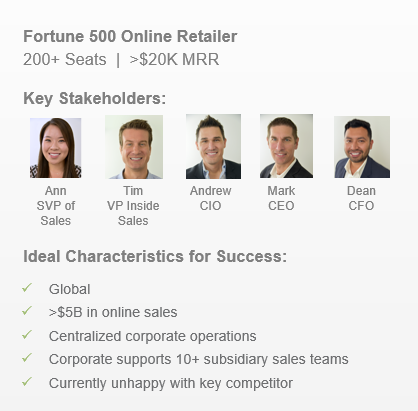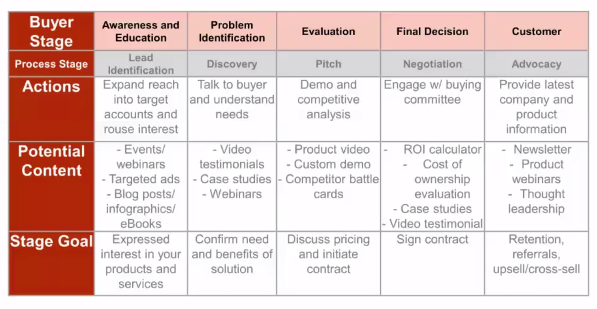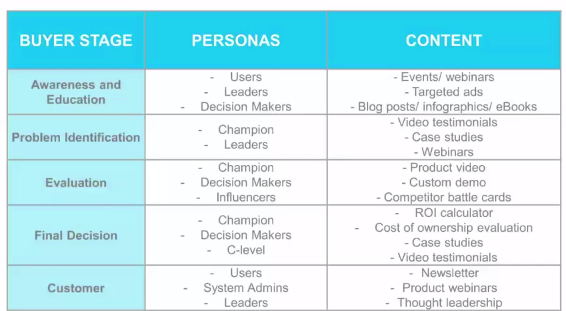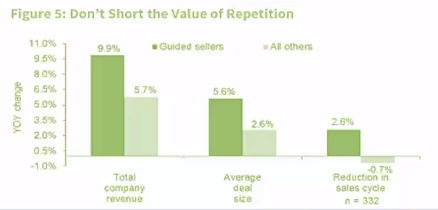Account-based marketing (ABM) is designed to unify the customer experience at an account level so that all key contacts within a target account have a shared, consistent experience with the brand. Building an integrated marketing strategy using an account-based method is a very targeted approach. And in today’s over-communicated world, its popularity amongst marketers is on the rise.
At its core, ABM is focused on personally connecting with your target buyers. Having a deeper understanding of your buyers’ goals and objectives, and how your product or service can make a difference could help you win more business for your organization. Here is how you create an ABM strategy in five simple steps.
1) Define Your Ideal Company Profile
Envision the ideal company profile and use that to create a “dream 100” list—companies that would be an ideal fit for what you sell. It’s easy to name big industry players or the hottest new companies that would look good in your portfolio, but if they aren’t a good fit for what you sell, it is detrimental in the long run.
It’s best to start with the pains you solve. Define those, and then move on to identify the verticals or types of companies that experience these pains. From there, you can connect the dots to specific companies within those groups that you want to target. Be sure to clearly define “why” these pains need solving.
As part of this framework, it’s time to literally define what your ideal company profile looks like. Get granular with details like industry, region or geographic characteristics, annual or monthly revenue, technologies used, and number of employees. It might be helpful to look at your current client list to identify the key characteristics that make for an ideal company profile.
2) Define Your Ideal Buyer Personas
The goal of answering this is to be able to anticipate next steps and move opportunities through the funnel in a timely manner. Know what process your target customers go through when they make a purchase decision. Be sure to identify who is involved and key factors they will likely need to consider. Take into account that goals and objectives may vary between each buyer persona involved in the decision making process.
There are three parts to understanding how customers buy:
Current status: Understand how buyers are getting by without your offering today. What is their status quo? They may not even be aware that the pain points or challenges they are experiencing can be solved with your offering. Educate buyers so that they are aware of options for resolution.
Similar scenarios: Once a problem has been identified and the buyer is aware of the problem, it’s time to understand how they are solving similar problems. What is the process for evaluating a solution like yours? Identify any documentation or security requirements that might be necessary for them to continue considering your offering.
Vendor comparisons: With insight into challenges they are experiencing, buyers are ready to explore and compare solutions. Anticipate some of the more common questions around pricing, implementation resources, and ROI (return on investment) timeline. Customer service really starts in sales, so be honest and set realistic expectations.
3) Build Process Aligned to Buyer Journey
Similar to building the ideal customer profile, it’s important to get granular here too. Map out the buyer journey and align it to the stages in your sales process. Define the primary actions for your sales team at each stage and include stage goal qualifiers that signal the buyer is ready to move onto the next stage. Identify potential content that would help a deal progress. As you’ll notice in the image below, content earlier in the funnel should be more educational. As the buyer moves towards evaluation and final decision, content tends to emphasize product or solution value and benefits.
It might help to keep an eye out for how buyers are interacting with your existing content on your website. Any interaction with blog posts, videos, eBooks, or product pages can be indicators of topics that are relevant to buyers. Not only can your sales team have a better understanding of where the buyer is during their journey, this insight can help your marketing team craft more insightful content to build into future account-based marketing plays.
4) Align Content to Key Personas and Stage
An effective account-based marketing strategy is all about full funnel alignment. From marketing to sales, align content to buyers’ needs at any given time. All the personas identified in your ideal customer profile won’t necessarily be involved at each stage of the buyers’ journey. Identify who is and which stages they are involved in.
Building off the buyer journey table above, focus on the buyer stage and content rows. Plot personas accordingly and use that insight to build relevant marketing content. At the awareness and education stage, personas to consider might include users, leaders, and decision makers. Leverage the pain points of these personas to develop helpful and meaningful content.
5) Measure, Learn, Optimize
Without data, you’re just shooting in the dark. Crafting an effective account-based marketing strategy takes a lot of effort. Ensure this effort doesn’t go to waste by setting up measurements for success.
There are a plethora of tools that support account-based marketing efforts, but it’s critical to align with sales so that reps can be guided through a sequence of activities. Aberdeen Group reported that companies with guided sellers have a greater total company revenue, higher average deal size, and shorter sales cycle. The power of repetition is the ability to measure and improve.
References
Aberdeen Group (2015). Follow the path toward better sales results: guided selling makes the grade. Retrieved from https://accent-technologies.com/wp-content/uploads/2015/12/Aberdeen-SB-sales-acceleration-through-guided-selling-platforms.pdf
Hedges, N. (2017). Why a customer-first approach is essential for company growth. Retrieved from https://velocify.com/blog/customer-first-approach-for-company-growth/
Velocify (2016). 5 Easy steps for creating an account-based marketing strategy. Retrieved from http://pages.velocify.com/5-Easy-Steps-ABM_On-Demand.html






2 Responses to Account-Based Marketing in 5 Easy Steps